1. Castelsardo
The village’s foundation dates back to 1102: its history began with the Dorias, who called it “Castel Genovese.” When it was conquered by the Spaniards it changed its name to “Castell’Aragonese” and assumed its present name in 1769, when it came under the Savoys. It is located on a promontory overlooking the Gulf of Asinara, and therefore held an important strategic function in ancient times, evidenced by the Doria Castle itself (which today is home to the Museum of Mediterranean Interweaving), the walls, and the ancient towers. Castelsardo is also home to the co-cathedral of Sant’Antonio Abate where one of the masterpieces of the Sardinian Renaissance is housed, the altarpiece of the Master of Castelsardo (to whom a small museum located in the crypt of the cathedral is dedicated), La Loggia (the medieval civic palace), and the archaeological sites in the surrounding area. Not far from Castelsardo is also the famous “Roccia dell’Elefante,” an ancient massif so named because of its shape, and which inside houses two domus de janas, the characteristic tombs carved into the rock.
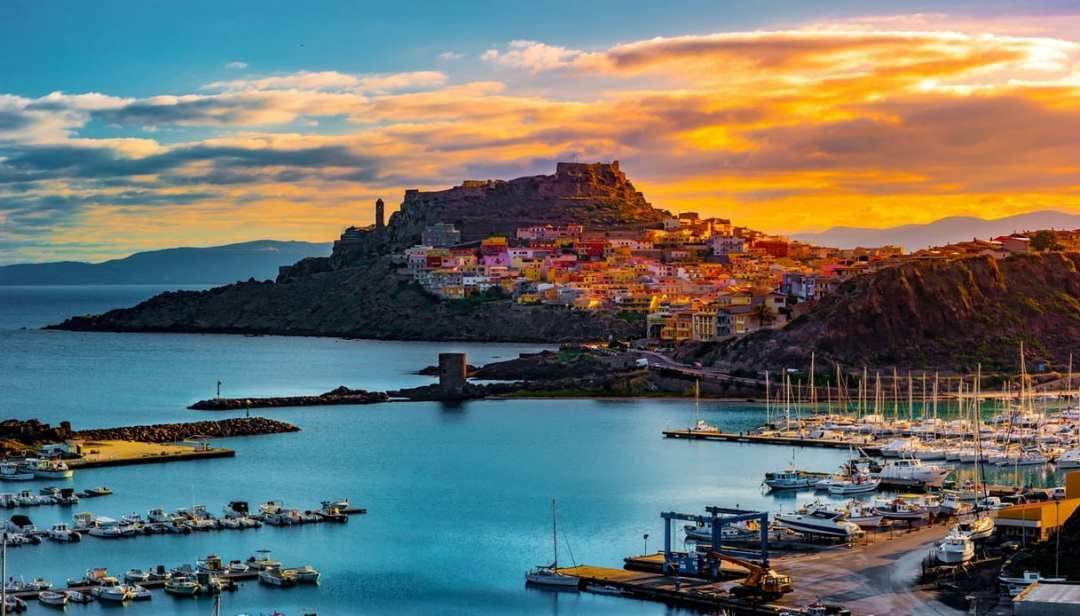 |
| View of Castelsardo |
2. Carloforte
Carloforte, which is located on the island of San Pietro, is a sort of piece of Liguria in the land of Sardinia: here, in fact, people speak Ligurian Tabarchino, a variant of the language spoken in Liguria, since the island of San Pietro, from 1738, was colonized by Genoese who had previously settled on the island of Tabarka (hence the name of the dialect), on the Tunisian coast. The history of inhabited settlements on the island had in fact been interrupted after Punic rule, and St. Peter remained uninhabited until the 18th century. The village was built to the design of architect Augusto de la Vallée, and the name is an oamage to Charles Emmanuel III of Savoy. From that era remain the walls, erected to protect the town from raids by Barbary pirates. And also eighteenth-century is the San Vittorio Tower, built as an outpost against pirates, and later converted into an astronomical observatory (today it is a museum site instead). Also in the town center is the monument to Charles Emmanuel III of Savoy, a 1786 work by Genoese sculptor Bernardo Mantero. The history of Carloforte is chronicled in the rooms of the local Museo Civico.
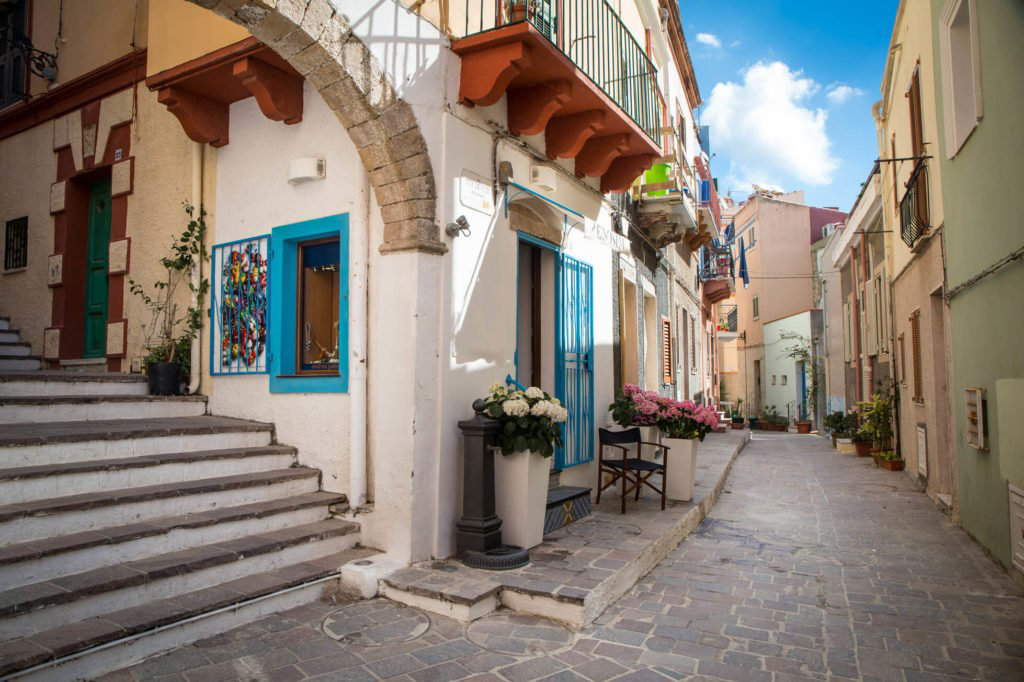 |
| Alleys of Carloforte |
3. Santa Teresa di Gallura
It is the northernmost municipality in Sardinia, and rises above the Mouths of Bonifacio, the strait that separates Sardinia from Corsica. The village, formerly known as “Longosardo,” was born and developed in the Middle Ages (probably in the 12th centol), first under the giudicato of Gallura, then under the Aragonese, and then became a Savoy domain in the 18th century. Its oldest monument is the Tower of Longosardo, while in the surrounding area one can visit important nuragic sites, such as those of Lu Brandali and Sa Testa.
 |
| The site of Lu Brandali near Santa Teresa di Gallura |
4. La Maddalena
Name of the island, but also of the village of the same name that constitutes its main settlement. There are attested settlements from the Neolithic period, and the island was also inhabited in Roman times, but following the fall of the empire the local populations abandoned it and, except for the presence of a few monks, La Maddalena remained uninhabited until the eighteenth century, when it became an important military outpost (a vocation La Maddalena still has today). The neoclassical church of Santa Maria Maddalena is worth seeing in the village, while there are many natural wonders in the surrounding area, so much so that the island is included in the National Park in the La Maddalena Archipelago.
 |
| The port of La Maddalena. Ph. Credit Gianni Careddu |
5. Bosa
The main center of Planargia, Bosa is a colorful town that has origins in Phoenician times: in fact, it was founded around the 11th-8th centuries BC. Having become a Roman town, it was abandoned in the early Middle Ages, but it flourished again under the Malaspina, lords of Lunigiana, to whom the fief of Bosa was granted by the judge of Torres in 1122: the Malaspina thus had the castle built and the village walled up. Bosa then became Catalan, then of the Arborea, then it was Spanish again, and finally Savoy (at the time of the Kingdom of Sardinia, Bosa was also a provincial capital). Its long history is attested by its monuments: the medieval church of San Pietro, the fourteenth-century church of Nostra Signora de Sos Regnos Altos, the Catalan church of Sant’Antonio Abate, and then the Baroque and late Baroque buildings of worship, the Ponte Vecchio built in the Savoy era. Numerous 16th-century coastal towers that were built against pirate raids. The medieval part of the village(Sa Costa) is clearly distinct from the 19th-century part(Sas Conzas), which developed around the tanneries that made Bosa’s fortune in the 19th century.
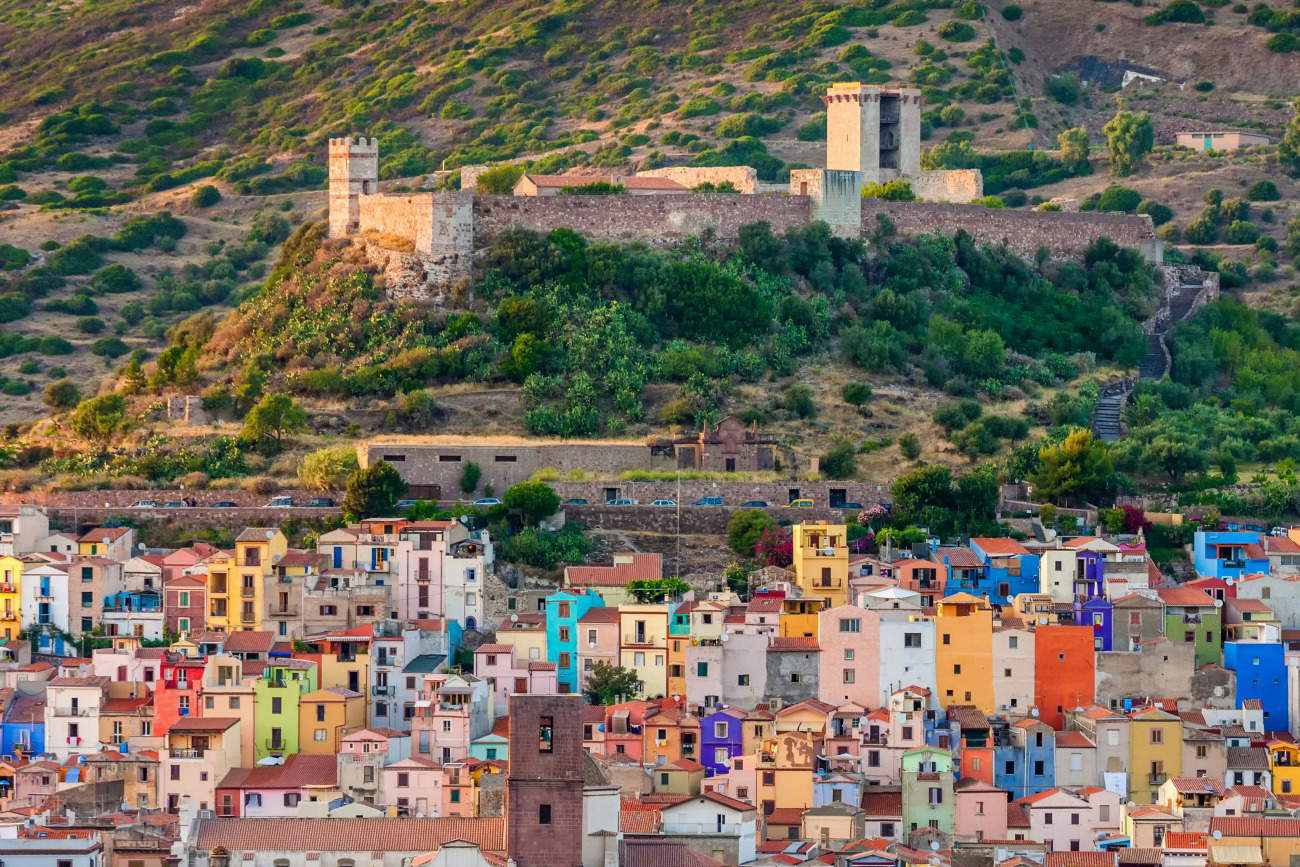 |
| View of Bosa |
6. Sant’Antioco
The very ancient origins of this village, which is located on the island of the same name, the island of Sant’Antioco (the fourth largest in Italy after Sicily, Sardinia and the island of Elba), are recalled by the nuraghi found in the immediate vicinity, for example, the Tombs of the Giants and the Domus de janas, dating from the 3rd-2nd millennium BC, proving that the area was inhabited since prehistoric times. The first settlements in urban form arose in Phoenician times, when the city with the name Sulki (Sulci), one of the oldest in the western Mediterranean, was founded. After being Roman, then subjugated by the Vandals, and then Byzantine, it became part of the giudicato of Cagliari: instead, the dedication to Sant’Antioco, which then also became the name of the town, is from the 12th century. Already at that time, however, the island was beginning to be abandoned, and would not be repopulated until the 18th century, when Sardinia had become the domain of the Savoys. Sant’Antioco is known for its many archaeological sites: nuraghi, prehistoric burials, mehirs, Punic necropolis, Roman catacombs, Roman bridge, aqueduct, and amphitheater. Also of early Christian origin is the basilica of St. Antiochus the Martyr (which has its modern appearance today), while the 19th-century Savoy fort is from modern times.
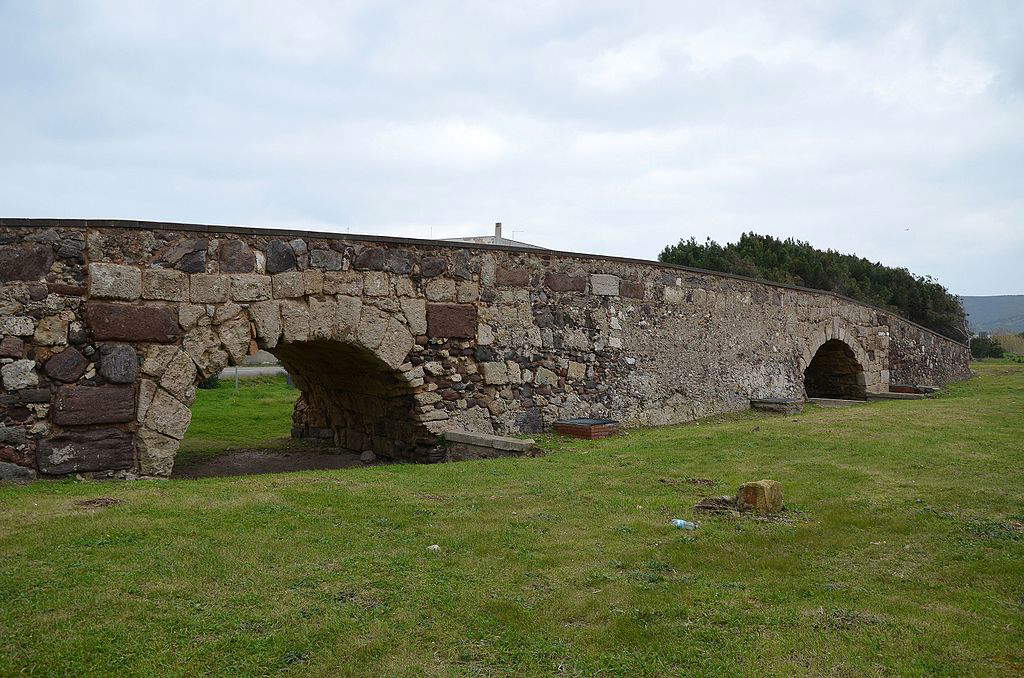 |
| The Roman bridge of Sant’Antioco |
7. Ulassai
A village clinging to a mountain in the heart of Ogliastra, it dates back to the Middle Ages: it is first mentioned in 1217 with the name “Ulazzai,” but the area, as attested by the numerous nuraghi in the area, was inhabited since ancient times. It was a Pisan domain, then an Aragonese one, then a fief of the Arborea and other families. In addition to its historical monuments (the 17th-century church of San Sebastiano, the medieval Palazzo Comunale, the Byzantine complex of Santa Barbara, which, however, is located outside the center), Ulassai is known as the town of the artist Maria Lai, to whom the contemporary art museum “Stazione dell’Arte” is dedicated, where there is a conspicuous collection of works by the artist. Also dedicated to her is the “Maria Lai Open Air Museum,” created after her most famous performance, Legarsi alla montagna (from 1981), a very famous land art action with which the artist tied all the houses in Ulassai with 27 kilometers of cloth.
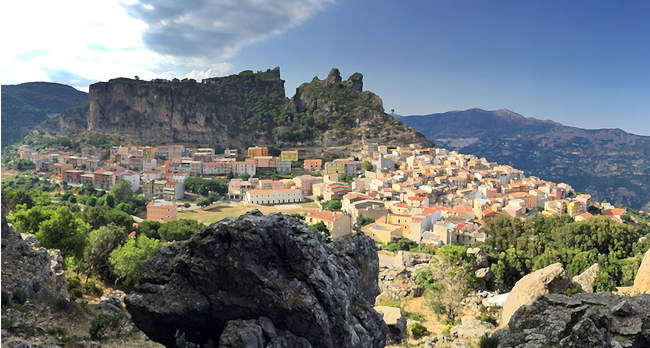 |
| View of Ulassai |
8. San Sperate
The first settlements in the area are from prehistoric times, but the settlement probably began to take shape with the Phoenicians, since Punic necropolises have been discovered in the area. The name of the village dates back to the early Middle Ages, when the relics of St. Sperate were brought here: it was Pisan, then Spanish, then a fiefdom of several families until it became Savoyard when Sardinia became part of the Savoy possessions. The name of San Sperate is linked to that of its murals, a phenomenon that began to affect the village from the 1960s: today, there are almost three hundred in the center of the town near Cagliari.
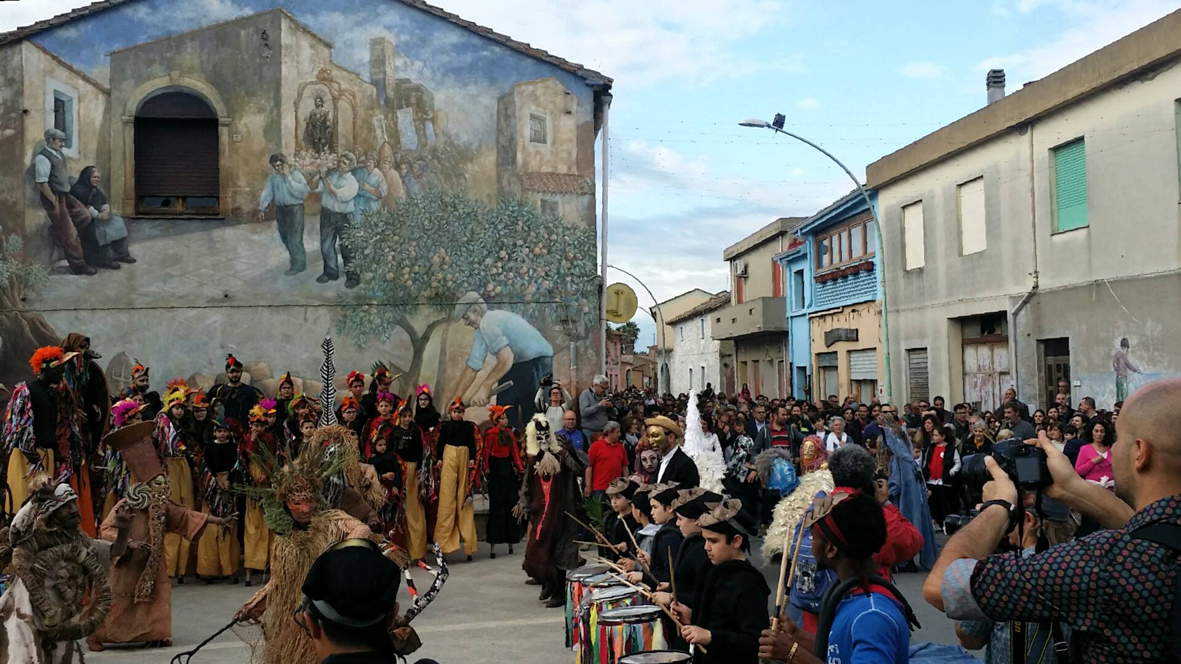 |
| Murals of San Sperate |
9. Posada
The most important center of Baronia, Posada is one of the oldest settlements in Sardinia: there was probably already a settlement here in the 5th century BC. It was an important port center in Roman times, and in the Middle Ages it belonged to the Judges of Gallura, then became Aragonese and Savoy. The village is dominated by the Castello della Fava, built by the judges of Gallura: the imposing tower is recognizable even from a distance. Posada is then known for its archaeological sites (nuraghi and tombs of the giants) as well as the landscapes that surround it.
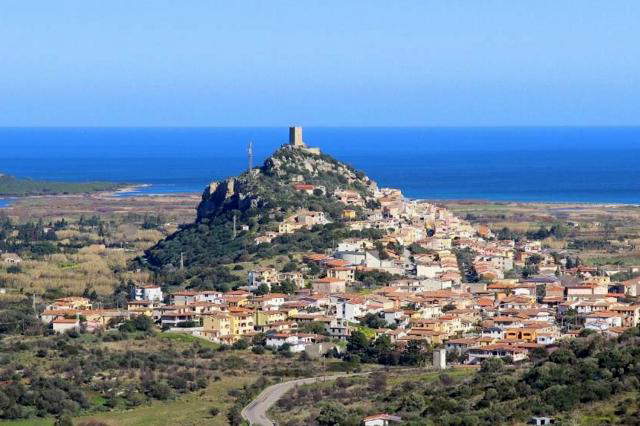 |
| View of Posada |
10. Atzara
The origins of Atzara date back to the Middle Ages (probably around the year 1000): at that time it was first of the Arborea, then it was Aragonese, and then it became Savoyard. The village is located in the Mandrolisai region and partly preserves the medieval urban fabric, as well as some buildings of the period (such as the church of San Giorgio and that of Sant’Antioco martire). A must-see is the Museum of Modern and Contemporary Art, dedicated to Antonio Ortiz Echagüe, a Spanish painter who stayed here in the early 20th century and encouraged the development of a local school of painting.
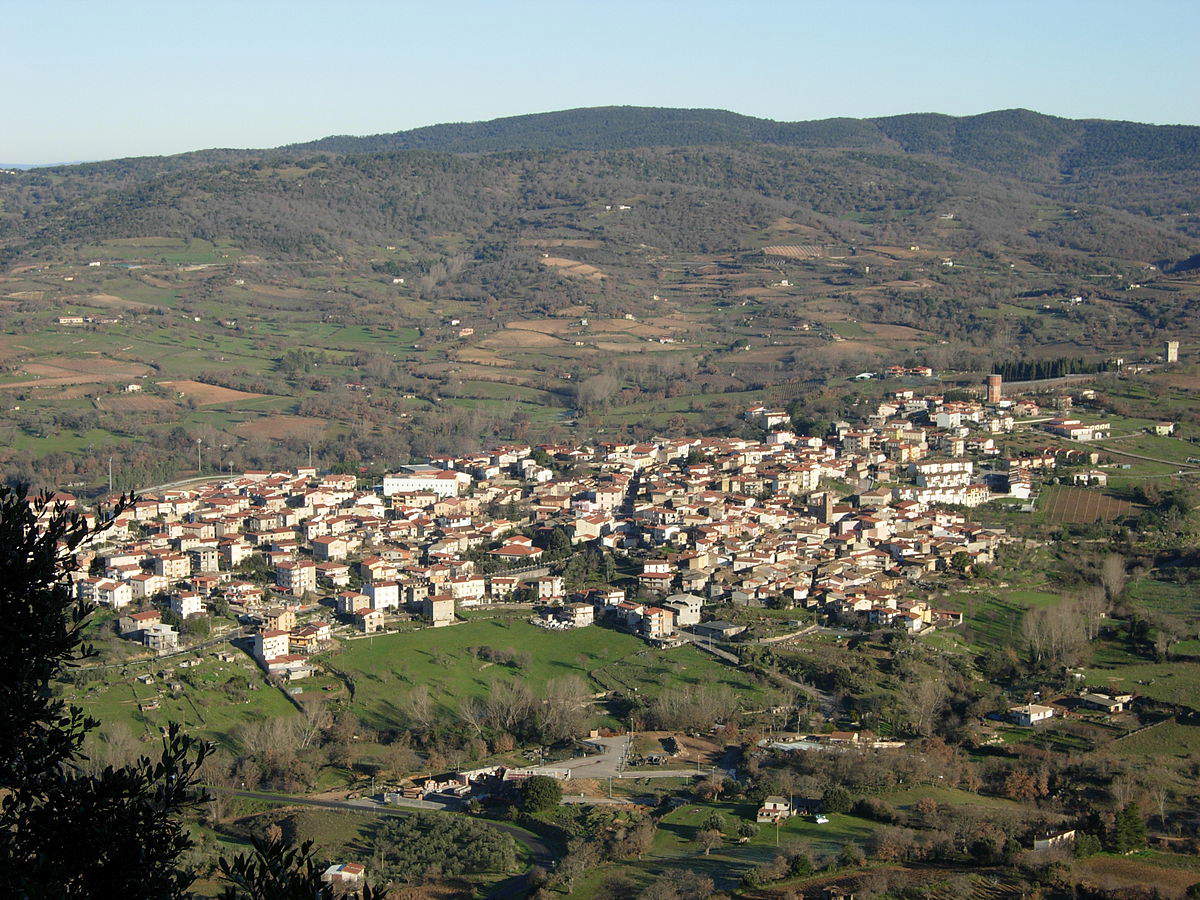 |
| View of Atzara. Ph. Credit |
 |
| Ten villages to visit in Sardinia |
Warning: the translation into English of the original Italian article was created using automatic tools. We undertake to review all articles, but we do not guarantee the total absence of inaccuracies in the translation due to the program. You can find the original by clicking on the ITA button. If you find any mistake,please contact us.